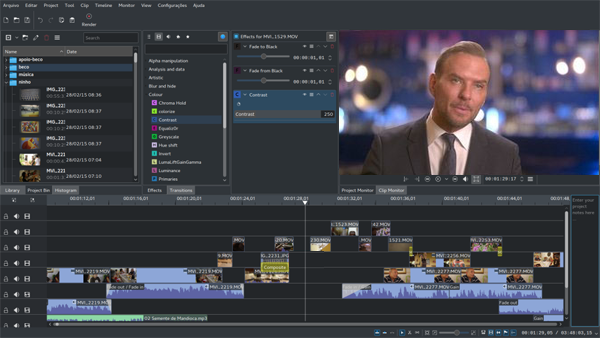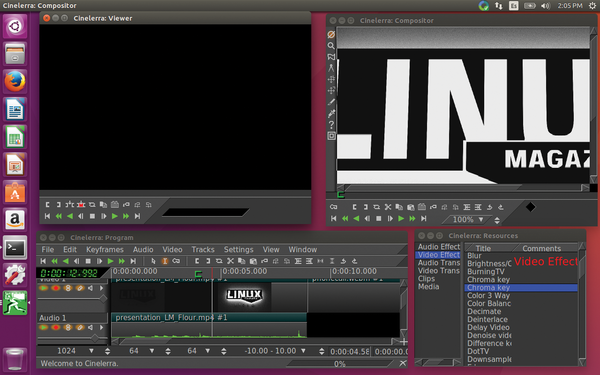

- #LINUX VIDEO EDITING SOFTWARE HOW TO#
- #LINUX VIDEO EDITING SOFTWARE INSTALL#
- #LINUX VIDEO EDITING SOFTWARE DOWNLOAD#
- #LINUX VIDEO EDITING SOFTWARE FREE#
To use Blender and Inkscape, you will need to install those packages separately. When prompted, select “yes” to create a desktop icon for the app.

Open your Linux terminal and run the following command.
#LINUX VIDEO EDITING SOFTWARE DOWNLOAD#
In the meantime, you can download the daily build of OpenShot and launch it with just a single command.

It seems that they are aware of the issue and I’m sure that a fix will arrive sooner than later. Now, I have launched the installer and the package opens and runs just as you’d expect but it appears that there is a bug that is causing OpenShot to crash when you move video to the timeline. These are features that don’t happen out of the box when you grab the traditional AppImage file from the website. Not only does OpenShot offer up professional-grade editing, but it also integrates with Blender and Inkscape for graphics creation.Īs I mentioned, the version for Chrome OS is nothing more than the Linux AppImage but OpenShot developers have taken the time to package it with an installer that makes the package executable and creates a desktop icon for your Chromebook. As I was looking around for any updates to the most common video editors, I discovered that OpenShot has packaged its AppImage with an installer that’s designed specifically for Chrome OS and that’s very exciting news. It is for this reason that it is easily “installed” and run on Chrome OS via the Linux container. The Linux version is packaged as an AppImage which makes it compatible with most major Linux distributions. It is available for Windows, macOS, and Linux.
#LINUX VIDEO EDITING SOFTWARE FREE#
OpenShot is a powerful video editor that is free and open-source.
#LINUX VIDEO EDITING SOFTWARE HOW TO#
These happen to run on Chrome OS if you know how to install them but one particular developer group has finally thrown their hat in the ring and is offering an official installation method for Chromebooks. That leaves us with options like Flowblade, Kdenlive, and others. I attempted to run Davinci on a Tiger Lake Core i5 and it still fails to recognize the new integrated GPU and it just won’t run. I am sad to report that, as of right now, that is not the case. Now that Tiger Lake Chromebooks are a thing, I had very high hopes that Davinci Resolve may actually run on Chrome OS thanks to the highly-anticipated Iris Xe graphics. Now that Linux on Chrome OS has had some time to mature, you can actually find some lighter-weight editors that actually run well enough to get some work done but until recently, there weren’t any developers giving Chrome OS attention in this department. In the early days, the experience was less than savory, and oftentimes, the editors either crashed randomly or the frame rates were so bad that they simply weren’t viable to use. Video editors have been high on my list and I have successfully installed and even used a handful of Linux-based editors using the Crostini container. Thankfully, Chrome OS has matured extensively over the past ten years, and times, they are a-changing.Įver since Linux apps for Chrome OS showed up in Beta, we’ve continually tested applications that could bridge the narrowing gap for users needing a little more out of their Chromebooks. For serious content creators and studios, however, those tools simply won’t cut it. There is an increasing number of really good web-based video creation tools out there and for a lot of users, they do everything needed to create quality content for the classroom, marketing materials, or what have you. That said, there is one particular area that Chrome OS is still lacking and I’m afraid that we are still a few years out from a web-based solution. Seeing how the foundation of Chrome Unboxed is built very much on Chrome OS and cloud computing, we are huge fans of the open web and ever-evolving tools that come with the territory.


 0 kommentar(er)
0 kommentar(er)
